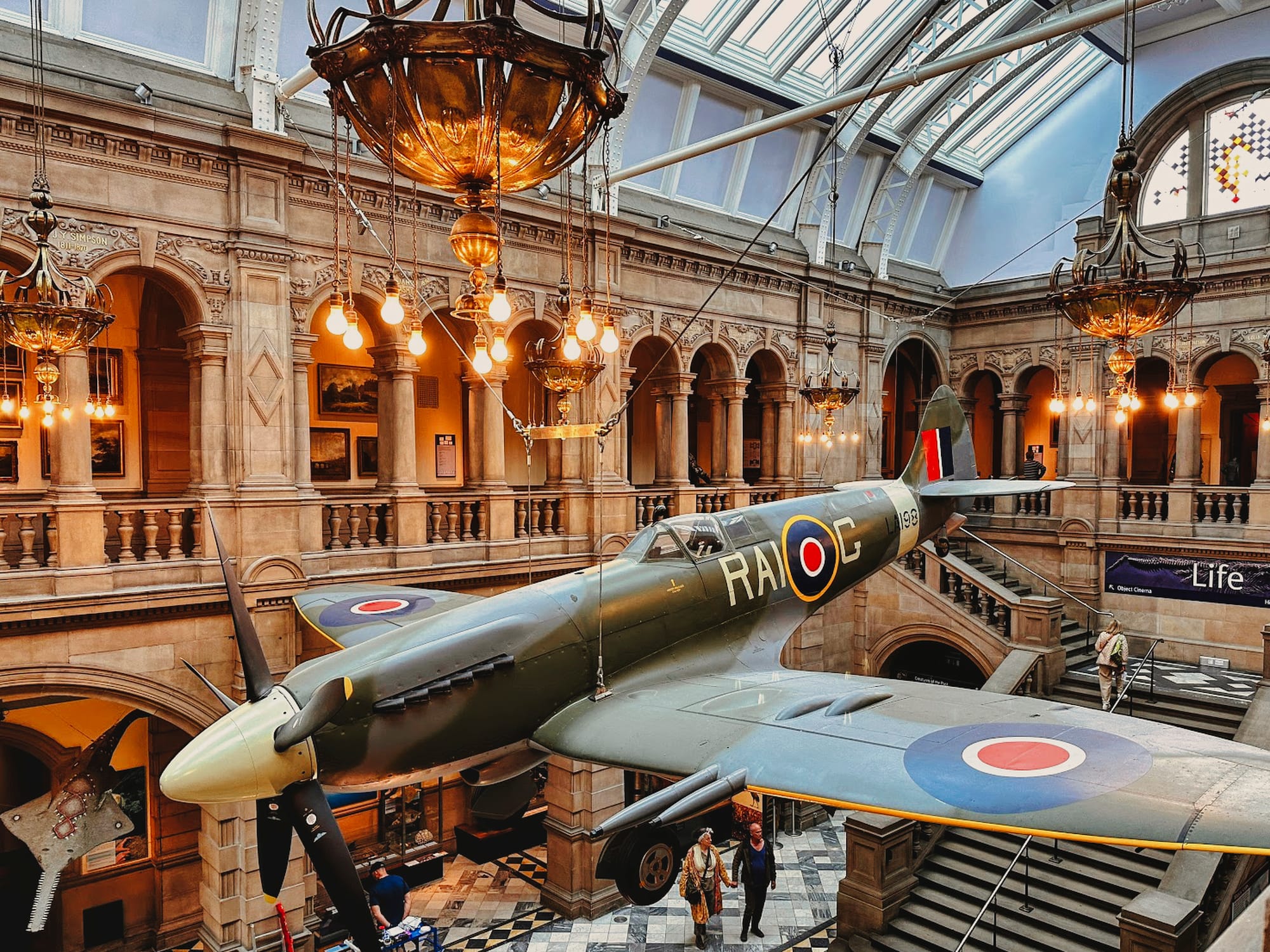Retirement has its small, exquisite freedoms. One of them is the ability to spend a Friday afternoon doing absolutely nothing urgent and doing it thoroughly. This is how I found myself in the Kelvingrove Art Gallery and Museum, a place I'd never visited adequately despite years of living in and passing through Glasgow.
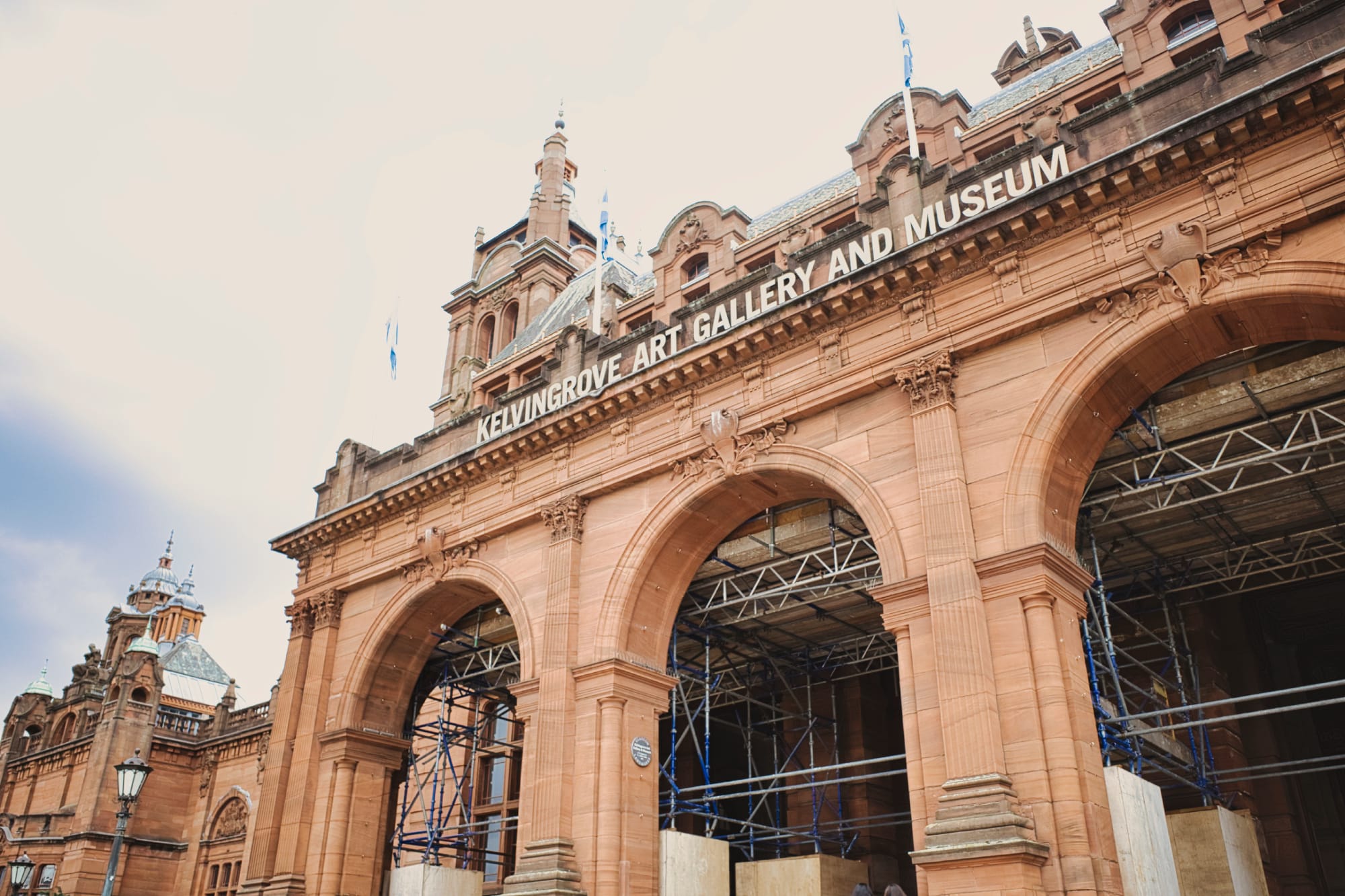
It's a grand, red sandstone temple to knowledge and civic pride. Inside, it's part cathedral, part cabinet of curiosities, and part slightly bonkers Victorian vision of what culture should look like. You don't tour Kelvingrove so much as to stumble into it, room by room, never quite knowing what's next.
The highlight, at least for me, was the aircraft. Not just any aircraft, but a Supermarine Spitfire, hovering dramatically over the main hall like an avenging angel of the Battle of Britain. It's perfectly lit by the glass ceiling, framed by chandeliers, and flanked by sculpture and oil paintings. It should feel out of place but somehow doesn't. In fact, it feels entirely appropriate—as though Glasgow wanted to make sure future generations would always look up and remember.
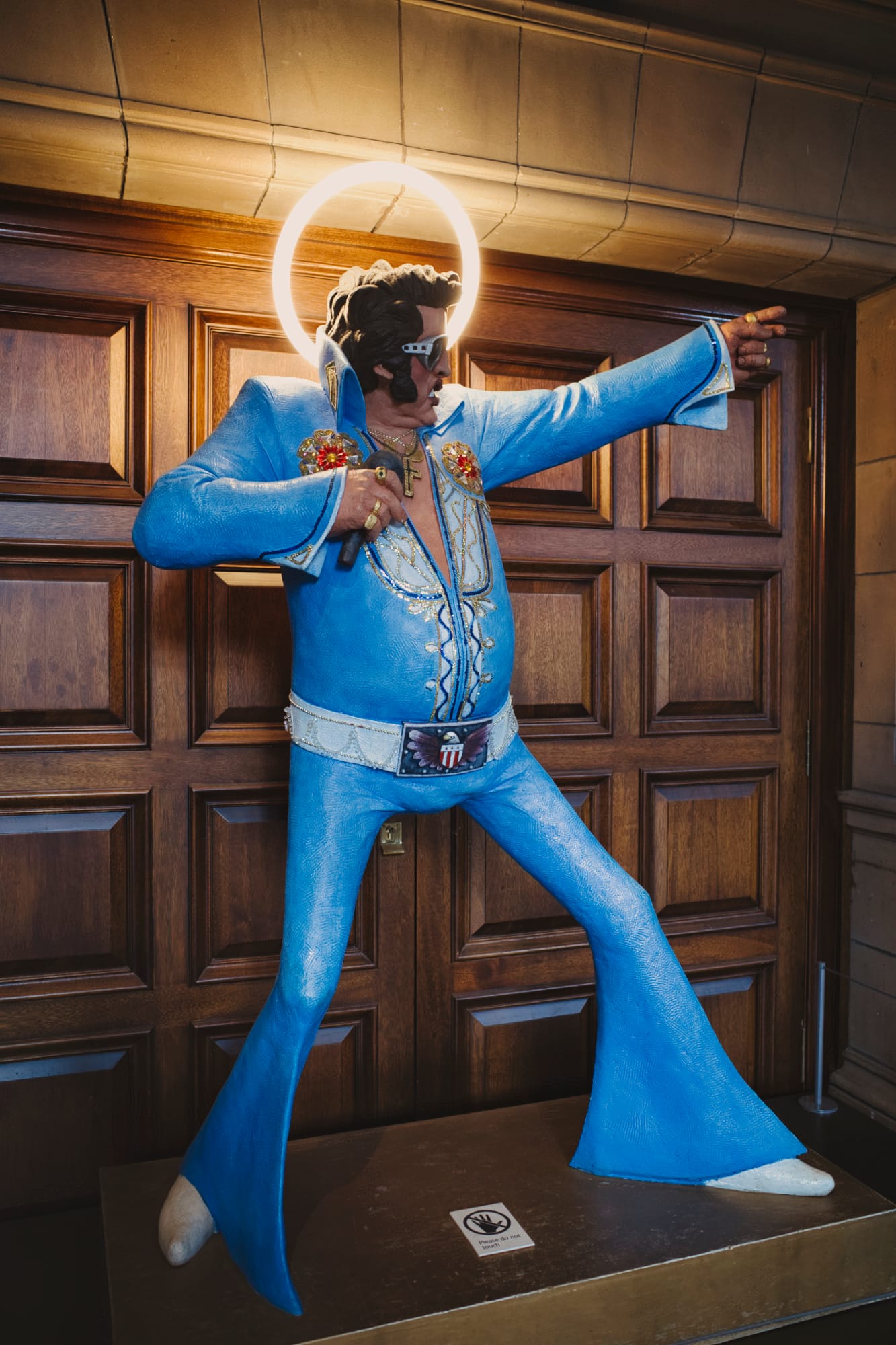
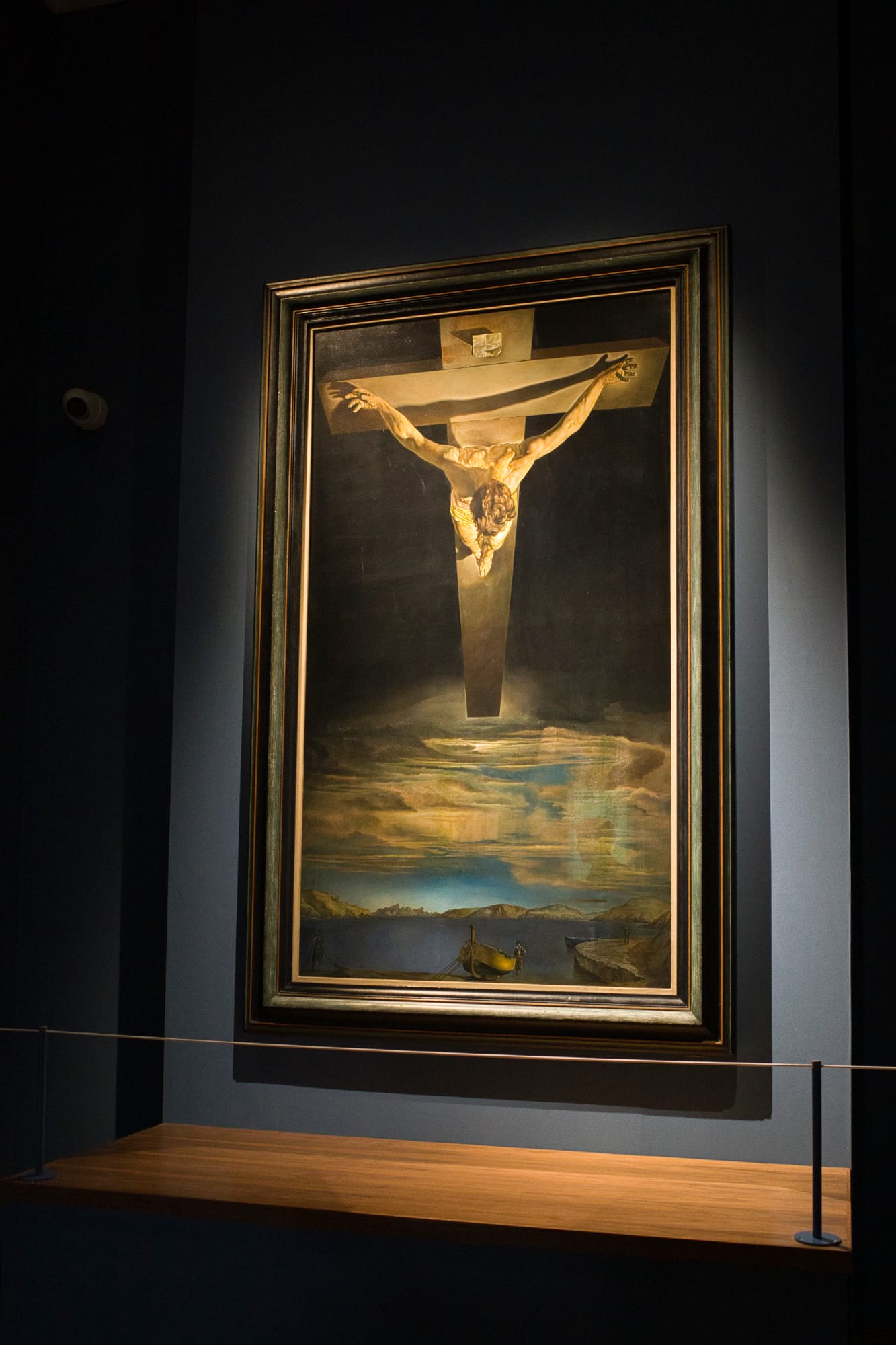
Two icons, one gallery—Elvis in rhinestones, Christ in oil. Only at Kelvingrove could sacred meet sequinned so effortlessly.
Just beneath the Spitfire, I had one of those surreal moments you sometimes get in museums. I turned and realised I was standing between Dalí's "Christ of Saint John of the Cross" on one side and a full-sized, rhinestoned Elvis Presley statue on the other. Christ, King of Kings. Elvis, King of Rock' n' Roll. And the Spitfire, king of the skies. If I'd tried, I couldn't have arranged a more eclectic holy trinity. There's something gloriously unselfconscious about how Kelvingrove puts it all together.
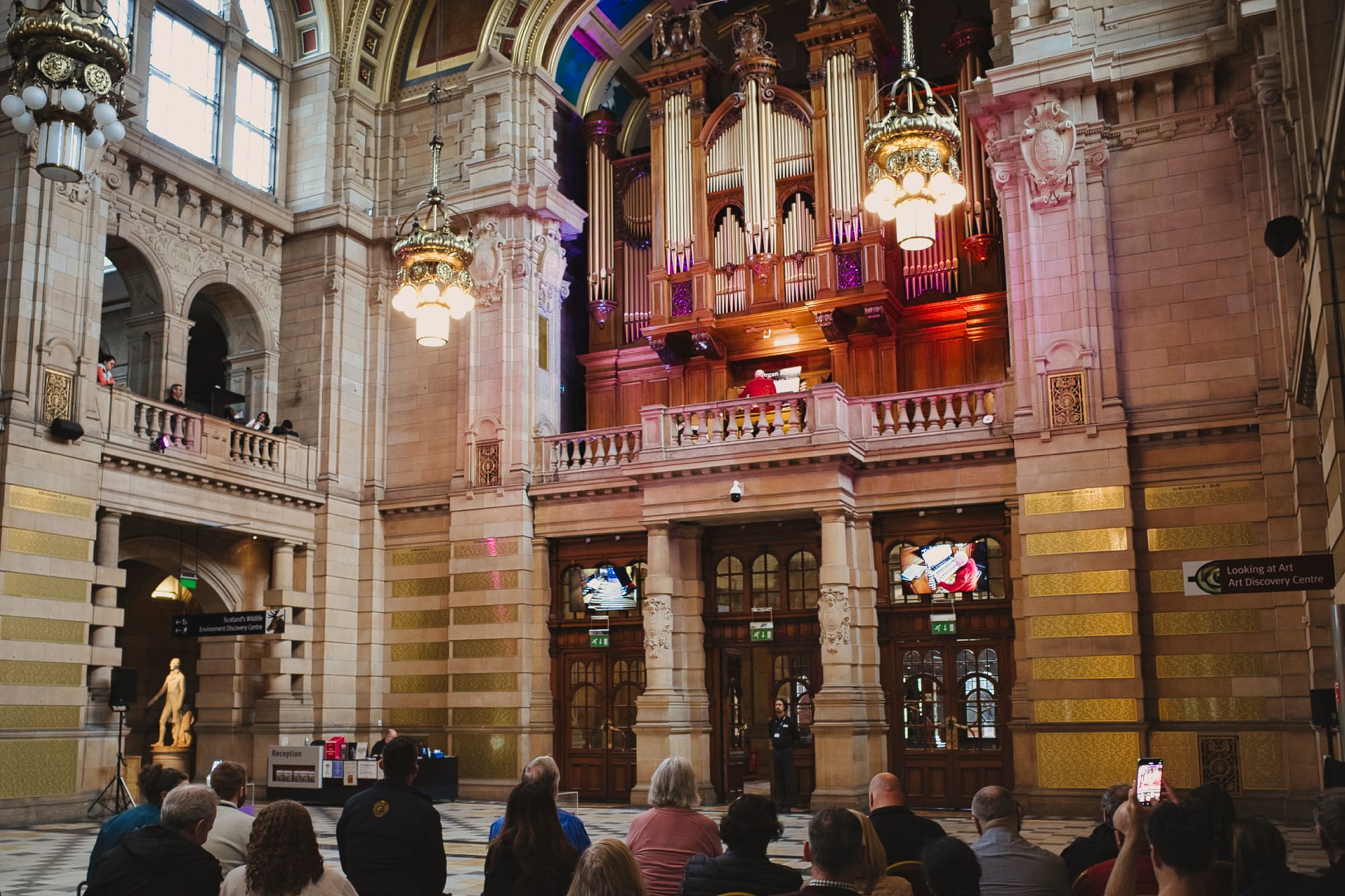
Later, the organist began a recital from the gallery above, deep, sonorous chords filling the entire space. I found a bench and sat. I had no phone, no agenda, just me, the music, and a Spitfire above my head.
If you ever find yourself in Glasgow, do go. Go slowly. Let yourself be surprised.

